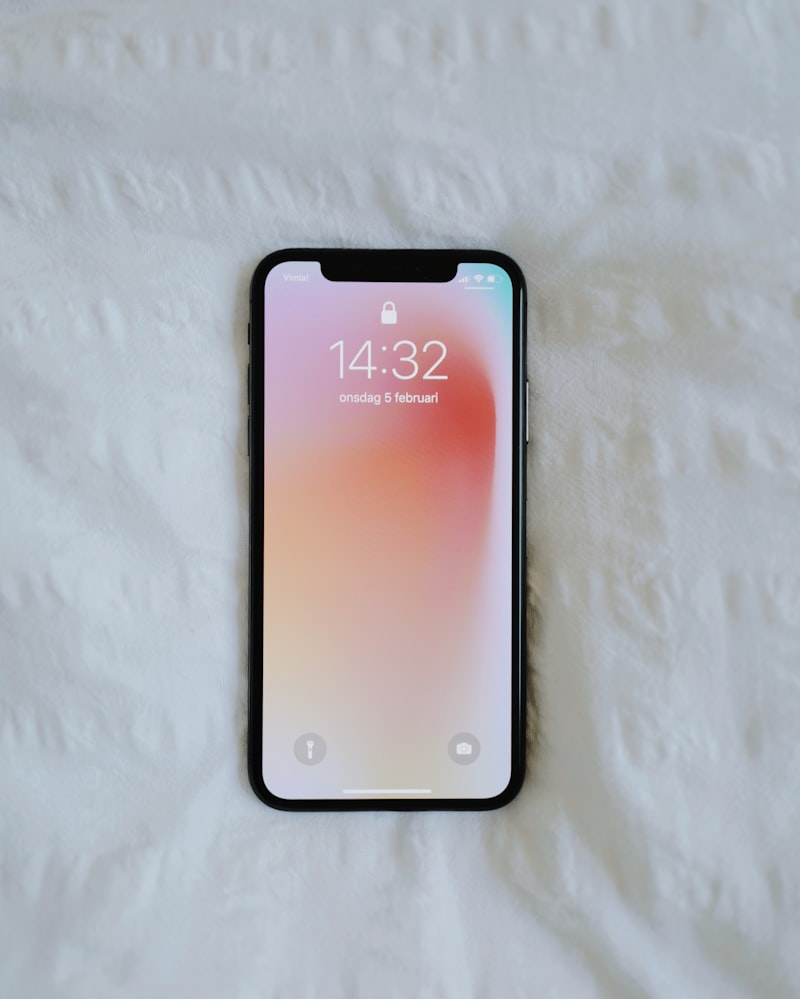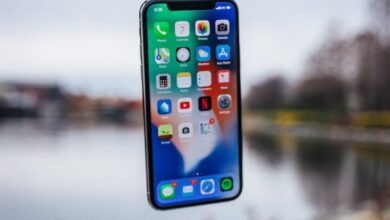The Connection Between Formatting and Device Lifecycle Management

Imagine your smartphone is a race car. It zooms along, carrying you to destinations, keeping you connected, and helping you navigate through life’s twists and turns. But just like a race car, it needs regular maintenance to perform at its best. That’s where formatting and device lifecycle management come into the picture.
Formatting your device is like giving it a pit stop. It involves wiping out all the data and restoring it to its factory settings. This process serves multiple purposes. Firstly, it removes any clutter, junk files, or unwanted apps that may be slowing down your device. It’s like decluttering your race car from unnecessary weight, allowing it to speed up on the track.
Secondly, formatting helps optimize your device’s performance. Over time, as you use your smartphone, it accumulates temporary files, cached data, and fragmented storage. All of this can make your device sluggish and unresponsive. Formatting erases all those unnecessary fragments and gives your device a fresh start, just like replacing worn-out tires or fine-tuning the engine of a race car.
Now let’s talk about device lifecycle management. Just as a race car team meticulously manages their resources to ensure peak performance, device lifecycle management focuses on optimizing your device’s lifespan. It encompasses everything from monitoring its usage patterns to extending its longevity.
One crucial aspect of device lifecycle management is ensuring timely software updates and security patches. These updates not only enhance the user experience but also address any vulnerabilities that may expose your device to cyber threats. It’s like constantly upgrading your race car with the latest technology to stay ahead of the competition.
Another vital component of lifecycle management is device retirement and recycling. Eventually, every race car reaches the end of its racing career. Similarly, devices have a lifecycle too. When it’s time to bid farewell to your old device, responsible recycling ensures that its components are properly disposed of, minimizing environmental impact. It’s like retiring a race car and recycling its parts for future use.
Formatting and device lifecycle management are intertwined in their mission to optimize your smartphone’s performance and lifespan. Formatting acts as a pit stop, giving your device a fresh start, while lifecycle management focuses on extending its longevity through updates and responsible retirement. By adopting these practices, you can ensure that your device continues to be a reliable companion on your journey, just like a well-maintained race car speeding towards victory.
Unlocking Efficiency: How Formatting Impacts Device Lifecycle Management
Have you ever wondered how formatting can impact device lifecycle management? Well, prepare to be amazed as we dive into the world of efficiency and explore the crucial role that formatting plays in optimizing the lifespan of your devices.
Imagine your device as a well-oiled machine. Just like any machinery, it requires regular maintenance and care to ensure smooth operation and longevity. Formatting is akin to giving your device a fresh start, wiping away unnecessary clutter and optimizing its performance.
Formatting involves erasing all the data on your device and restoring it to its original factory settings. This process eliminates redundant files, unwanted apps, and residual junk that accumulate over time. By doing so, you create a clean slate for your device, allowing it to run at its peak performance.
Think of formatting as a digital detox for your device. It removes all the digital baggage that slows down its processing speed and hampers its overall efficiency. By decluttering your device through formatting, you enable it to perform tasks more swiftly, saving you precious time and boosting productivity.
But formatting isn’t just about speed and efficiency; it also has significant implications for device security. By wiping away all your personal data during the formatting process, you ensure that no sensitive information falls into the wrong hands. This is especially important when you decide to sell or recycle your device. You wouldn’t want your personal data floating around in cyberspace, right?

Additionally, formatting can help resolve software glitches and issues that may arise during the course of your device’s lifecycle. It acts as a reset button, eliminating bugs and errors that can cause crashes and freezes. By regularly formatting your device, you minimize the risk of encountering these frustrating obstacles and enjoy a smoother user experience.
Cracking the Code: The Hidden Link Between Formatting and Extended Device Lifespan
Introduction:
Have you ever wondered how to make your electronic devices last longer? We often overlook a simple yet powerful solution right at our fingertips—formatting. Yes, that’s right! In this article, we will uncover the hidden link between formatting and extended device lifespan. Prepare to be amazed as we delve into this intriguing topic!

The Power of Formatting:
Formatting is like pressing the reset button on your device, wiping away all the accumulated digital clutter. It’s akin to decluttering your home for a fresh start. By formatting your device, you give it a new lease on life, allowing it to function optimally and efficiently.
Eliminating Digital Clutter:
Just like our physical spaces, our devices tend to accumulate clutter over time. Unnecessary files, cache, and outdated applications can bog down their performance. Formatting eradicates this digital clutter, creating space for your device to breathe and operate smoothly. It’s like giving your device a spa treatment, rejuvenating it from within.
Boosting Speed and Performance:
As time goes by, our devices may become sluggish and unresponsive. Formatting can work wonders in revitalizing their speed and overall performance. Think of it as a turbo boost for your device, enabling it to run at its full potential. By clearing out unnecessary data and optimizing the system, formatting unlocks hidden power, making your device feel brand new once again.
Enhancing Battery Life:
Battery life is a common concern for many device users. Did you know that formatting can also contribute to extending your device’s battery lifespan? When you format your device, you eliminate background processes and resource-heavy applications that drain the battery. This efficient energy management results in improved battery performance, allowing you to enjoy more hours of uninterrupted usage.
Conclusion:
Now that you understand the hidden link between formatting and extended device lifespan, you hold the key to unlocking the full potential of your electronic companions. By embracing formatting as a regular maintenance practice, you can optimize performance, boost speed, and prolong battery life. So, why wait? Give your device the rejuvenation it deserves and experience the astonishing benefits firsthand.
Maximizing ROI: The Crucial Role of Formatting in Device Lifecycle Management
When it comes to maximizing ROI in device lifecycle management, one essential element often overlooked is formatting. You might be wondering, how does formatting impact ROI? Well, let me tell you—it plays a crucial role in enhancing efficiency, reducing costs, and optimizing the overall management process.
Imagine your device inventory spread across multiple spreadsheets, scattered emails, and random notes. It’s like searching for a needle in a haystack when you need specific information. But with the right formatting strategy, you can transform this chaos into an organized system that empowers your team.

Formatting provides structure and clarity. By categorizing devices based on models, specifications, and locations, you create a streamlined approach to managing and tracking them. This means faster access to information, quicker decision-making, and ultimately, improved productivity.
Moreover, formatting facilitates data analysis. When your device data is properly formatted, you can easily generate reports and extract meaningful insights. From identifying trends in device performance to pinpointing areas of improvement, formatting helps you make informed decisions that drive ROI.
But formatting goes beyond just organizing data—it also enables automation. Modern device lifecycle management systems leverage standardized formats to automate routine tasks such as device allocation, repairs, and upgrades. By automating these processes, you free up valuable time for your team to focus on more strategic initiatives while minimizing errors and delays.
Think of formatting as the backbone of your device lifecycle management ecosystem. Just like a well-structured framework supports a building, proper formatting supports efficient operations. It ensures that everyone involved—IT managers, technicians, procurement teams—can access and interpret data effortlessly.
From Wipeout to Optimal Performance: The Formatting Strategy Revolutionizing Device Longevity

Introduction:
Have you ever experienced the frustration of using a sluggish device that takes forever to respond? It can be maddening, right? But what if there was a formatting strategy that could transform your device’s performance from wipeout to optimal? That’s exactly what we’re going to explore in this article. Get ready to discover the revolutionary formatting technique that can breathe new life into your devices.
The Power of Formatting:
Formatting is not just about organizing data or wiping the slate clean; it’s a game-changing strategy that can significantly enhance the longevity and performance of your devices. Forget those temporary fixes or endless software updates that only offer short-term relief. With the right formatting approach, you can unlock the full potential of your device.
A Fresh Start:
Imagine formatting as a reset button for your device. It eradicates clutter, eliminates unnecessary files, and frees up valuable storage space. It’s like giving your device a fresh start, allowing it to operate smoothly and efficiently without any digital baggage weighing it down. By starting anew, you can optimize your device’s performance and extend its lifespan.
Improved Speed and Responsiveness:
One of the most noticeable benefits of implementing a formatting strategy is the substantial boost in speed and responsiveness. Think of it as clearing out a clogged pipe. Formatting removes all the digital debris that accumulates over time, such as redundant apps, cached data, or fragmented files. This cleansing process ensures that your device functions at its peak, providing you with a seamless user experience.
Enhanced Security:
Formatting also plays a vital role in maintaining the security of your device. It wipes away potential vulnerabilities, malware, or hidden traces of sensitive data, making it harder for cybercriminals to exploit any weaknesses. By periodically formatting your device, you create a robust defense against potential threats, keeping your personal information safe and secure.

Preserving Storage Space:
As technology evolves, our devices must adapt to handle increasing amounts of data. Formatting offers an effective solution to manage and preserve your storage space. By decluttering your device through formatting, you can regain valuable storage capacity, ensuring that you have ample room for important documents, photos, or new apps.
Conclusion:
Don’t let your device suffer from poor performance or premature obsolescence. Embrace the formatting revolution that can transform your device from a wipeout to an optimal powerhouse. By implementing this revolutionary strategy, you’ll experience improved speed, enhanced security, and preserved storage space. So, why wait? Give your device the fresh start it deserves and unlock its full potential through the power of formatting.




